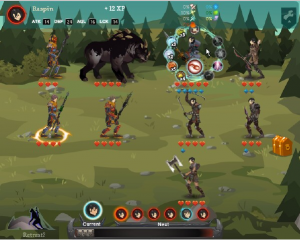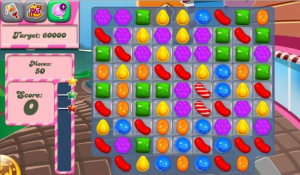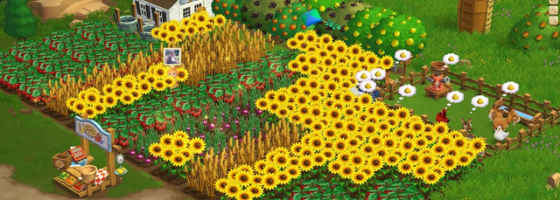Back in November of last year, Game-Wisdom had its first guest post from veteran game designer and city-builder genre expert: Chris Beatrice. Before and after that post we talked about design via email and there was one topic I found interesting: How he saw shades of the city builder genre in social games like Farmville.
At first I disagreed with him, but as I thought about it and saw the development of other social games, I could see a pattern of translating complex design into social games.
Abstraction Squared:
Video games regardless of their genre, depth or intended audience are built on abstracted systems. The first element that we see with making a social game based on an existing design is simplifying it further with increased abstraction.
With the city-building genre for instance, it is known for having dozens of resources and buildings tied to various ways of keeping people happy. A hospital, shopping mall and firehouse all deal with different aspects of managing a city, but their overall purpose is to keep people happy.
Instead of having each building tied to a smaller game system, a social game designer would condense all their functionality down to their basic purpose, which was providing happiness. So that building the as mentioned buildings would simply be applied to some kind of a happiness rating.
Realistically, saying that a hospital would provide happiness in the same way as a shopping mall doesn’t make sense, but we’re not dealing with realism. Using this method, many social game designs are what expert gamers would consider the simplest or easiest forms of the genre in question. Tying all mechanics to one or two main systems makes it easier for the designer to implement resource or consumable mechanics.
Paying it Continually:
Any free-to-play or social game makes its money off of micro transactions. For social games, there are three common micro transaction types that are featured: additional energy, consumable advantage and premium currency.
Additional energy is for any social game that features a pay or wait mechanic — where you can only play the game for a limited duration in one sitting before either waiting for more energy, or paying money.

Premium currency is designed to be used by all aspects of the respective game and is a common purchase.
The trick with energy mechanics is that due to the escalating hurdles for the player to make progress, the further someone plays the more energy is required.
Meaning that energy mechanics aren’t restrictive when you first start to play, but become a bigger hassle the longer someone plays.
Consumables are meant to provide one time or limited duration boosts to whatever game systems make up the game. Going back to the first point about abstraction, this is where having limited systems tied to consumables pay off.
The perceived value of consumables goes up if there is only one type that can be used for every system in a social game. If it looks like someone has to buy multiple types of consumables for several systems, the overall value would lessen.
As an example, in the social game Indiana Jones Adventure World, the game was a social version of 2d action adventure games. In each map there were challenges that involved interacting with specific objects or enemies; however each interaction required a different consumable item. Run out of one, and you would have to buy more to complete each challenge.
The problem was that the consumables weren’t transferable: each one was only associated to a specific challenge and to complete everything required multiple micro transactions. This conflicted with the quick nature of social games — where the designers want the act of buying to be as quick and painless as possible.
In order for consumables to work, they should be inexpensive and provide a noticeable improvement with a clear understanding of the time limit for the effect.
Premium currency is the most important purchase, as it gives players a universal currency that they can spend on almost every aspect of the game. When it comes to social games, premium currency is where we see the most monetized aspects of the design, as if something can be skipped, bought or enhanced, and then a premium currency charge can be attached.

The Dragon Age social game was one of the few social games designed with actual gameplay to go with the social aspects.
When it comes to the phrase “pay-to-win”, premium currency is the common example of that concept and what gamers don’t like to see.
Before the freemium changes to World of Tanks, you could spend real money to buy gold (premium currency) that could be used on enhanced ammo that was stronger than regular ammo.
In a game where one shot could spell the difference between surviving and being destroyed, having purchasable advantages like that was not a way of winning over people.
Moving from systems and money, there is one other way social games are designed and it is one of the best hooks for the genre.
Short and Sweet:
Ultimately, what separates the most profitable social games from the least and games in general is the pick up and play aspect.
As video games became more popular over the last decade and drew in new fans, designers did everything they could to make them as accessible as possible: tutorials, standardized control schemes, easy modes and more.
Social games for both the computer and mobile markets are all about quick and simple to understand gameplay. If it takes more than five minutes to understand how a social game works, then the designer has failed their job. That also involves the controls which for the PC should be entirely controllable with a mouse, and for the mobile market, usually touch-screen focused.

Candy Crush Saga is currently one of the most popular social games thanks to its pick up and play design. But was also designed with micro transactions in mind.
Social games usually adhere to the same formula when it comes to tutorials or the early minutes of play:
Give the player a simple mission to show gameplay and the energy mechanic, have them visit a high level (or currency purchased) friendly area, have them use a consumable, have the player buy/use premium currency and then have them ask a friend for help.
Using that formula, a social designer can show off all the aspects of their game within a few minutes and more importantly, how easy it is to make purchases and bug their friends. In the early parts of the game, the player won’t have to spend money to make progress, with them improving naturally. Any purchases would be for optional stuff that the game will advertise that the player wants.
The majority of the purchases won’t become required until later on with the actual time dependent on the game. The point is that the player should be invested enough in playing whatever content is there, before the price barriers show up.
As we’ve seen, there is a fine line between developing a game that is simple to learn vs. something that is just simple. While not every social game takes these three elements to the extreme, unfortunately the casual market rewards those that do.
When a social game comes along that does try to be a little more complex, such as the Dragon Age social game by Soren Johnson, it ran into the problem of being too far in the middle: Too complex for the casual audience, and too many unpopular social features to attract the hardcores.
Unfortunately for social game design to evolve, it’s going to have to come from beyond the regular social game studios like Zynga as if the system is earning them major profit, why change? And even if we do see change, the big question remains: Will such a game be able to attract both the casual and hardcore audiences?


